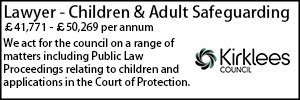School exclusions – CCTV and police investigations?
Liam Ellwood and Joe Orme-Paul look at the issues around school exclusions and the existence of CCTV footage.
- Details
No headteacher ever wants to suspend or permanently exclude their pupils. Unfortunately, these decisions are a part of school life, and at times a headteacher will be required to exercise their power to suspend or permanently exclude pupils as a means to manage behaviour at school.
Often headteachers will look to rely on CCTV evidence to support their decision making. This is particularly the case for permanent exclusions which may be based on a one-off serious breach of the school’s behaviour policy. However, while CCTV can be a central piece of evidence, headteachers often encounter barriers to sharing this evidence. One such barrier might be where the police are conducting their own investigation. This might be the case where the permanent exclusion relates to criminal conduct, such as a physical assault, criminal damage on school property, or drug-related offences.
Wary of jeopardising their own investigation, police can and will often insist that schools do not share CCTV footage as part of the exclusion review process. This can be particularly challenging for a headteacher whose decision has been largely predicated on this evidence.
Both the decision taken by the headteacher, and any subsequent review by the reviewing body, must be procedurally fair. If the school cannot share this CCTV footage with the pupil, their parents, and/or the reviewers, how can they ensure a fair process?
Overcoming the obstacle
It is clear from the Department for Education’s suspension and permanent exclusion statutory guidance that a headteacher need not wait for the conclusion of a police investigation before taking a decision on a suspension or permanent exclusion. In such circumstances, the headteacher will need to take a decision on the evidence available to them at the time.
The statutory guidance does give us some guidance on how to manage a suspension or permanent exclusion review while there is a concurrent police investigation ongoing. However, on the restriction of evidence it is fairly light touch, giving only the following guidance at paragraph 273:
Where the evidence is limited by a police investigation or criminal proceedings, the headteacher should consider any additional steps they may need to take to ensure that the decision to suspend or permanently exclude is fair. The final decision on whether to suspend or permanently exclude is for the headteacher to make.
This is not overly prescriptive, and so schools are often left needing a practical solution to this problem. A first and obvious step is to consider whether the headteacher needs to rely on the CCTV evidence at all. In many cases, the pupil subject to sanction will give an honest account of what has happened. In addition, there may be eyewitness accounts from other pupils and staff. Any one of these sources could be fallible if relied upon as the sole basis of the decision. If for example, a pupil who previously confessed to a behavioural breach changed their mind, and accused staff of pressuring a confession out of them, other evidence would be a necessity to fall back on. However, if a headteacher has an array of evidence from different sources to support the decision, the CCTV footage may be surplus to requirements.
Often however, CCTV will be central to the decision-making process. Either it will be the sole available evidence, or it will be critical independent verification of other supporting evidence. If that is the case, then transcribing the CCTV footage can also be a popular work-around with schools. The logic behind this route is clear. This way, the content of the CCTV footage can be documented and relayed to all parties. The pupil and their parents have a clear understanding of what it is alleged that the pupil has done and understand the evidence the headteacher has relied upon in reaching a decision.
Where schools can fall down is in ensuring that this process avoids any appearance of bias. Often, the footage will be transcribed by the headteacher themselves, or a member of staff at the school who reports to the headteacher. A parent may in such circumstances argue that this isn’t sufficiently independent. They may argue that a headteacher with an axe to grind against a certain pupil has (or has had their staff) embellish the record of the CCTV to favour their case against the pupil.
Such accusations may seem far-fetched in practice, and not all reviewers would be convinced by such arguments. However, an important aspect of procedural fairness is not just actual bias, but also the appearance of bias. Perception is important, and some reviewers will expect to see an added layer of independence where the evidence cannot speak for itself.
A practical solution is for school leaders to take the transcription process out of the hands of school staff. A transcription may be made by an independent party, perhaps a school leader from another school in the area with which the excluding school’s senior leaders have no prior relationship. Any transcription could also be taken in the presence of an independent witness, who signs the record to confirm that the transcription is a true and accurate record. Alternatively, the school could consider asking the police to assist with this process. While the investigating officer is unlikely to oblige such a request, many schools have strong relationships with their local community support officer. It might be that they would be willing to transcribe the footage, in order to provide additional independence and assurance to those reviewing the evidence.
Conclusion
Ideally a headteacher would be able to share with reviewers all the evidence available to them prior to taking the suspension or permanent exclusion decision. Where this is not possible, school leaders may be required to find practical solutions to ensure that the contents of this evidence can be shared with reviewers. In doing so, the need for procedural fairness is paramount, and so school leaders should consider the steps needed to ensure that there is both actual fairness, and the perception of fairness.
Though not the focus of this article, the school must also keep their UK GDPR obligations in mind when considering whether to share the CCTV footage. Should you require any support with this, or any other aspect of the exclusions process, myself or a colleague in our education team will be happy to assist.
Liam Ellwood is an Associate and Joe Orme-Paul is a Partner at Hill Dickinson.































